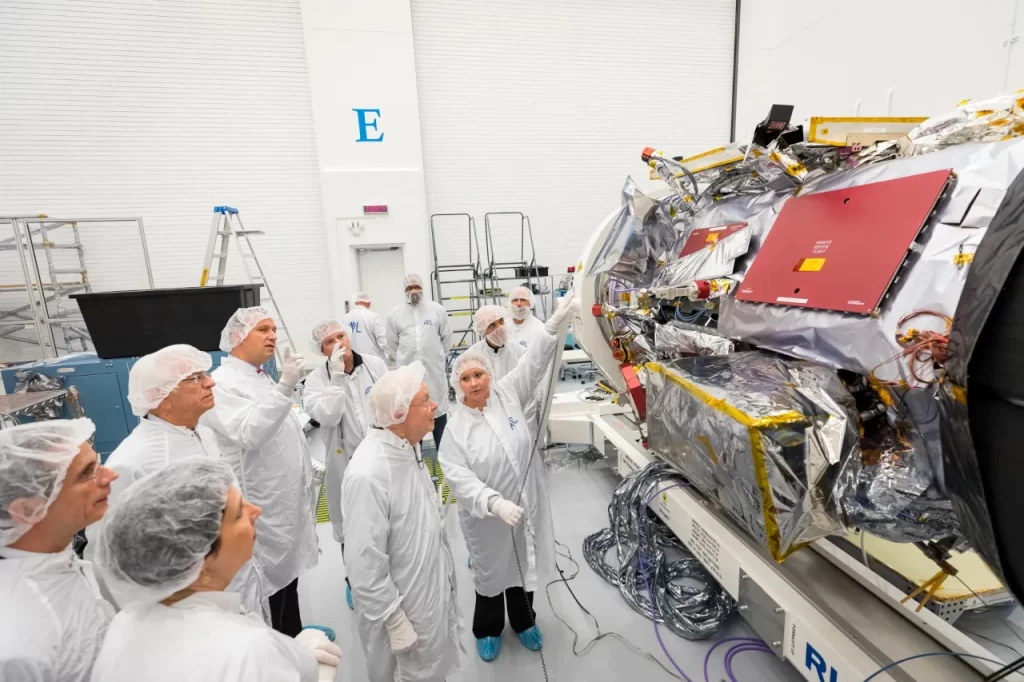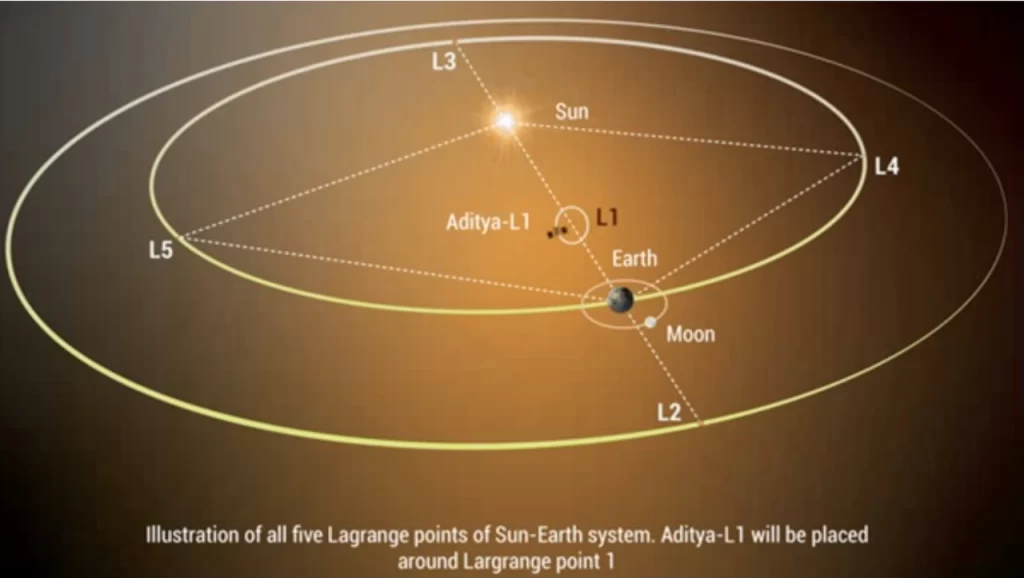India’s Aditya L1 and the United States’ Parker Solar Probe are pioneering solar missions to uncover the Sun’s secrets. While their goals are similar, their approaches, technology, and closeness to the Sun are not.
Inside the Inferno: Parker Probe Peers into the Sun’s Glowing Furnace
The Parker Solar Probe, named after the renowned solar physicist Eugene Parker, was launched on August 12, 2018, as part of NASA’s ‘Living with a Star’ mission. Its mission is to improve our knowledge of the Sun by studying its atmosphere. The Probe seeks to determine why the corona, the Sun’s outermost layer, is significantly hotter than its surface and what causes the solar wind, a stream of particles arising from the Sun, to accelerate. At launch, the spacecraft weighed 685 kilograms (1,510 pounds). It was launched using the Delta IV-heavy rocket with an upper stage.
The Sun’s structure is intriguing, starting with the photosphere, its visible outer layer, which is about 500 kilometres thick and is the primary source of sunlight. Above the photosphere lies the chromosphere, the lower region of the Sun’s atmosphere, about 2,000-3,000 kilometres deep. It emits a red glow during solar eclipses. The corona, the Sun’s outermost layer of atmosphere, reaches millions of kilometres into space.
Visible as a shining halo—or glowing white ring—during total solar eclipses, the corona is significantly hotter than the layers beneath it. Despite its high temperatures, the corona is surprisingly dim because it is much less dense than the Sun’s surface (photosphere), about 10 million times less dense, making it much less luminous than the Sun’s surface.
The Parker Solar Probe is equipped with four sets of payloads or instruments. These are designed to withstand the extremely harsh environment near the Sun. Its primary objectives include determining how the solar wind is accelerated, how energy and heat are transferred across the corona, and what produces powerful solar flares and coronal mass ejections (CMEs).

On December 14, 2021, NASA announced a historic achievement of the Parker Solar Probe: it had entered the Sun’s corona and the upper atmosphere. It gathered data on the particles and magnetic fields there. This was the first time a spacecraft had made direct contact with the Sun’s atmosphere, marking a significant milestone in space exploration.
The Parker Solar Probe’s unique orbit is closer to the Sun than any earlier spacecraft. The Probe will get seven times closer to the Sun than any previous spacecraft. At its closest approach, the spacecraft will come within about 3.9 million miles (6.3 million kilometres) of the Sun. The Probe is safeguarded by a thick, 11.43-cm carbon-composite shield, enabling it to conduct unique studies of the Sun. This shield is crucial as it can endure extreme temperatures up to about 1,377 degrees Celsius (2,500 Fahrenheit), allowing the Probe and its instruments to function in the intense heat near the Sun.
Sun from Afar: Aditya L1 Unveils the Star’s Wrath from a Safe Distance
In contrast, the Indian Space Research Organisation’s (ISRO’s) Aditya L-1 aims to study the Sun’s corona and solar emissions from a different vantage point. It operates from Lagrange Point 1 (L-1), where the gravitational force between the Earth and the Sun is balanced, allowing the spacecraft to maintain a relatively constant position 1.5 million kilometres (15 Lakh Kilometres) from Earth and 148 million kilometres (14.8 Crore kilometres) from the Sun. This position provides a unique perspective and enables continuous monitoring of the Sun and its dynamic behaviour. Lagrange Point can be used by spacecraft as “parking spots” in space to remain in a fixed position with minimal fuel consumption.
Aditya L-1, launched on September 2, 2023, on the PSLV C57 rocket, is equipped with seven payloads—or scientific instruments—for analysing the Sun’s outermost layers. The mission’s primary objective is to explore the causes of solar eruptions and their impact on space weather. Solar eruptions—such as solar flares and CMEs—release significant energy, impacting satellite communications, power infrastructure and astronauts’ safety.
The mission’s study of these solar events aims to improve space weather forecasting and mitigate the risks associated with solar storms. Aditya L-1 is on track to reach its target, or Lagrange Point 1 (L-1), with ISRO Chairman S Somanath confirming its expected arrival at 4 pm on January 6, 2024.

Aditya L-1, weighing 1,475 kilograms (about 3,252 pounds) at launch, is a cube-shaped satellite with a honeycomb sandwich design. Its primary structure measures around 89 x 89 x 61.5 cm, roughly 2.9 x 2.9 x 2 feet in size.
One of the key instruments on Aditya L-1 is the Visible Emission Line Coronagraph (VELC), which observes the solar corona in visible light to analyse solar eruptions. The mission also includes such tools as the Solar Ultraviolet Imaging Telescope (SUIT) and a Magnetometer. These instruments investigate the Sun’s magnetic field and its variations to understand its role in driving eruptions and affecting space weather.
One Touches the Flame, One Watches the Sparks
While the Parker Solar Probe and Aditya L-1 aim to enhance our understanding of the Sun, they approach this objective from different perspectives and employ distinct methodologies.
The Parker Solar Probe ventures into the Sun’s corona, providing invaluable data on the processes taking place near the solar surface—such as acceleration of solar wind and transport of energy.
Aditya L-1, on the other hand, focuses on observing the Sun’s outermost layers and studying the causes and effects of solar eruptions. By observing the Sun from Lagrange Point 1, this mission offers a continuous and comprehensive view, allowing scientists to gather long-term data on the Sun’s behaviour.
The Parker Solar Probe and Aditya L1 have distinct missions and operational strategies. But both significantly contribute to our solar understanding and the Sun’s influence on Earth. Their observational and data-collection capabilities yield key insights into solar behaviour, space weather and their effects on Earth’s technological and environmental systems. They offer a comprehensive view of solar phenomena and their terrestrial consequences.
